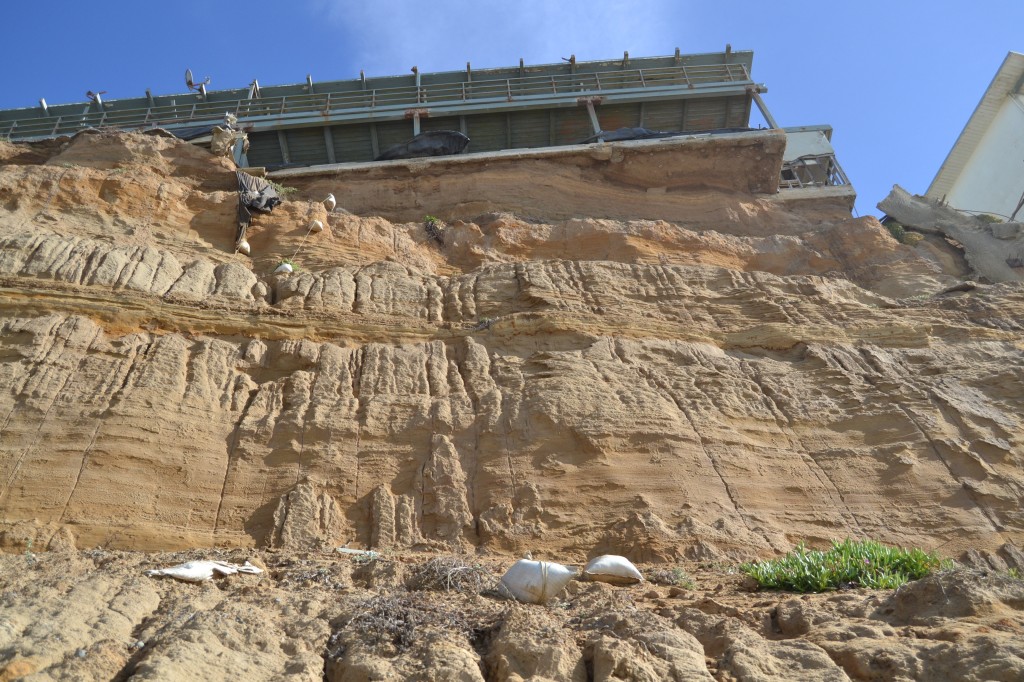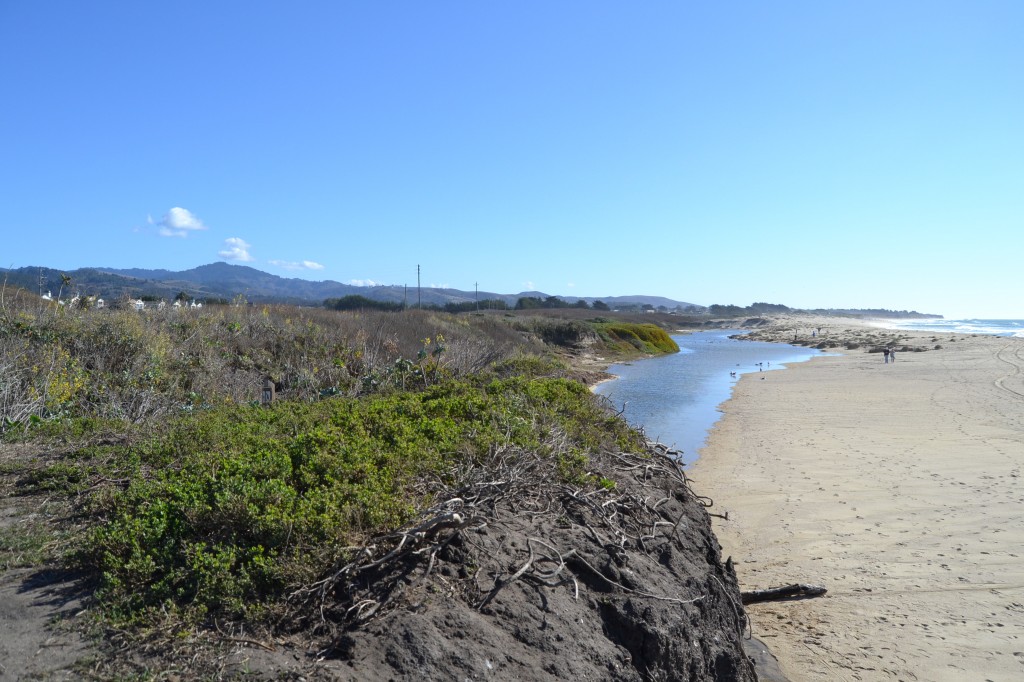Even amid a historic drought, San Mateo County officials are planning for future sea level rise that could bring extensive flooding, beach and bluff erosion and water contamination to the county’s coastlines by the end of the century.
Half Moon Bay is using $145,000 in new state grants to plan for future sea rise. And state Assemblyman Rich Gordon (D-Menlo Park) is preparing to release new findings from statewide hearings on the threat.
“Local governments are starting to take the issue seriously and are doing their homework,” Gordon said. “In San Mateo County, we’re exposed on two out of four sides to sea level rise.”
The threat of rising tides, which had once been left to long-term analyses, is now being viewed as a serious issue for coastal communities along California’s length. Though the full impact may not be felt for another 50 to 100 years, lawmakers, researchers and regional planners are trying to jumpstart planning efforts now, rather than scramble for solutions later.
San Mateo County is at particular risk of rising water, according to scientists, thanks to its location between the Pacific Ocean and the San Francisco Bay. A 2009 study by the Pacific Institute named the county as one of the most vulnerable in the state. The county’s Pacific coast faces a potential 18 miles of erosion and 30 miles of flooding on its roadways alone if seas rise roughly four-and-a-half feet as predicted by 2100, the report said.

Already, areas along the San Mateo County coast are showing the impacts of the sea. Stretches of Highway 1 north of San Mateo County loses up to 1.4 feet of roadside each year to erosion, according to a 2012 Caltrans report. The city of Pacifica condemned a row of apartment buildings in 2010 after their bluff-top location overlooking the ocean eroded severely, causing the building foundations to jut over the cliffs. And sections of Half Moon Bay sit within a high-risk zone for coastal flooding even without additional sea level rise.
Generally, planners tackle sea level rise by deciding to fortify a coastline with sea walls or other structures, conduct a managed retreat by allowing sea levels to rise uncontained in certain areas or use adaptive measures like replenishing sand on beaches.
Half Moon Bay began updating its General Plan and Local Coastal Program last year, with a goal of developing sea level scenarios by this spring. The city’s new planning process, which will also tackle perennial topics like where and what to build, will update documents last revised in the 1990s. Officials say the new funds will be used to incorporate sea level risk into the revisions.
Jo Chamberlain, who sits on the city’s citizen advisory council for the update, has seen ongoing coastal erosion as the executive director of the Coastside Land Trust, a nonprofit which preserves open space land.
“We own many properties along the shoreline and it’s eroding very fast,” she said. “We expect uncontrollable erosion to continue given our experience and what the research indicates.”

Next steps for the planning process include community discussion sessions and a citywide mailed survey. Meetings are expected to continue through 2015, when the new plans will need to be approved by the state’s Coastal Commission.
But the sea level issue reaches beyond Half Moon Bay. San Mateo County’s Pacific coast features a high number of unincorporated towns and agricultural lands that fall under the county’s jurisdiction.
Each area faces unique challenges from sea level rise, according to Steve Monowitz, deputy planning director for the county. While northern coastal towns such as Moss Beach or Montara may be more affected by eroding bluffs, lower-lying areas may be at risk for flooding or loss of beachfront.
“There is no one-size-fits-all solution for this problem,” Monowitz said. “Our general approach is to do the best we can to ascertain what areas are vulnerable, and then come up with a plan to either protect them or move them.”
One town the county is intent on protecting is Princeton-by-the-Sea, a small community north of Half Moon Bay which sits within a high-risk area. “Will this be inundated at some point? I think so,” said Eric Trojak, who co-owns a winemaking business in Princeton.
With the widespread erosion of the popular Surfer’s Beach north of Half Moon Bay posing a risk to nearby Highway 1, Trojak said he’s seen more residents discussing a higher ocean, even if many don’t expect to see it in their lifetime. The county has launched a planning process to better understand the risks to Princeton in the event of sea level rise, with a goal of a formal plan by 2015.
The economic threat of sea level rise stretches beyond homeowners and municipalities.

Pillar Point Harbor, north of Half Moon Bay — which provides more than 300 berths for commercial fishermen and other fleets — is seeking consultants to update its long-term financial plan, which manager Peter Grenell said must take into account sea level rise.
Inland, rising seas also pose a potential concern for agriculture, with saltwater able to contaminate freshwater aquifers used by farmers.
There has long been concern over saltwater contamination in the area, said Jim Wilkinson, a contractor with experience drilling coastal wells. While he has yet to see any, he notes that farmers in Monterey County have seen such contamination.
Grant Ballard, a biologist who studies sea level rise along the county’s coast, encouraged residents to educate themselves about the long-term risks.
“Getting people to have the conversation is critical,” he said. “We don’t know exactly what will happen, but we do know the range of possibilities. What can we do today so that we don’t look back and wish we had done more?”
Listen to reporter Matthew Hansen explain the story behind the story on KZSU Stanford’s “Peninsula Report” radio show with host Eliza Ridgeway:
